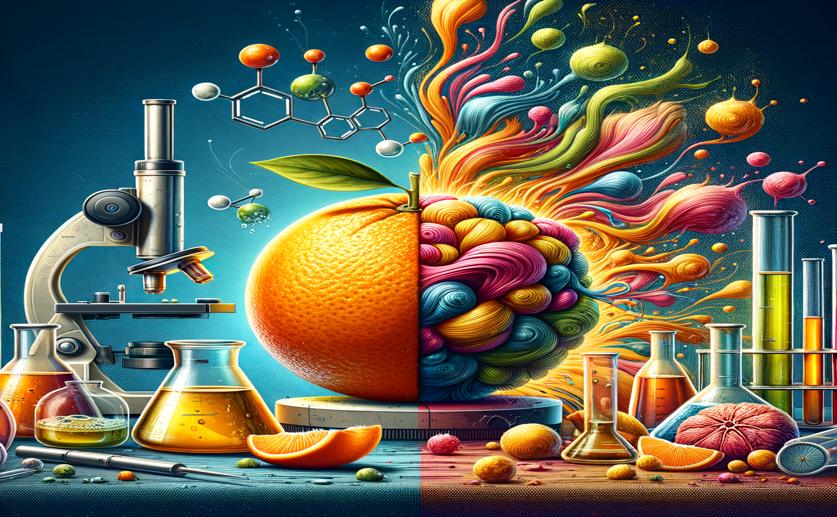
Analysis of Aroma Compounds in Healthy and Diseased Orange Juice
Greg Howard
2nd May, 2024

Image Source: Natural Science News, 2024
Key Findings
- Researchers found that citrus black spot (CBS) increases the total volatile content in citrus fruits, affecting aroma
- CBS infection causes more floral and fruity aromas in juice, and enhances citrusy, floral, and green aromas in essential oils
- The study identified specific marker compounds in juice and essential oils that can serve as fingerprints for CBS infection levels
References
Main Study
1) Characterization of volatile compounds from healthy and citrus black spot-infected Valencia orange juice and essential oil by using gas chromatography-mass spectrometry.
Published 30th June, 2024 (future Journal edition)
https://doi.org/10.1016/j.fochx.2024.101374
Related Studies
2) Evaluation of aroma differences between hand-squeezed juices from Valencia late and Navel oranges by quantitation of key odorants and flavor reconstitution experiments.
Journal: Journal of agricultural and food chemistry, Issue: Vol 49, Issue 5, May 2001
3) Identification of Light-Induced Key Off-Flavors in Ponkan Mandarin Juice Using MDGC-MS/O and GC-MS/PFPD.
4) Effect of Huanglongbing on the Volatile Organic Compound Profile of Fruit Juice and Peel Oil in 'Ray Ruby' Grapefruit.



 20th March, 2024 | Jenn Hoskins
20th March, 2024 | Jenn Hoskins